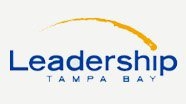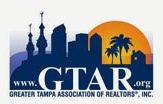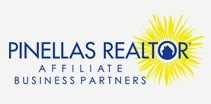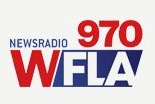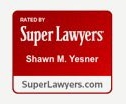Foreclosure Law Update
Recently, the District Court of Appeals for the Second District of Florida (which includes Charlotte, Collier, DeSoto, Glades, Hardee, Hendry, Highlands, Hillsborough, Lee, Manatee, Pasco, Pinellas, Polk, and Sarasota Counties) issued an opinion in the case U.S. Bank National Ass’n v. Busquets. In that case, the appellate court held that the trial court was incorrect in dismissing the bank’s foreclosure case.
The Busquests argued to the trial court that the notice of default and acceleration sent by the bank was deficient in 5 ways. The trial court dismissed the case finding that the notice was insufficient in two of the five ways alleged by the borrowers.
The two deficiencies cited by the Court were: (1) the lender’s notice required that the bank could institute foreclosure proceedings if the Busquets failed to catch up payments, whereas the mortgage required that the foreclosure must be by judicial proceedins; and (2) the arrears notice said that the borrowers “may” reinstate the mortgage whereas the mortgage contained stronger language forcing the bank to allow reinstatement assuming the borrowers complied with other conditions.
Most form mortgages contain a Paragraph 22, that provides the following in bold font:
22. Acceleration; Remedies. Lender shall give notice to Borrower prior to acceleration following Borrower’s breach of any covenant or agreement in this Security Instrument (but not prior to acceleration under Section 18 unless Applicable Law provides otherwise). This notice shall specify: (a) the default; (b) the action required to cure the default; (c) a date, not less than 30 days from the date the notice is given to Borrower, by which the default must be cured; and (d) that failure to cure the default on or before the date specified in the notice may result in acceleration of the sums secured by this Security Instrument, foreclosure by judicial proceeding and sale of the Property. The notice shall further inform Borrower of the right to reinstate after acceleration and the right to assert in the foreclosure proceeding the non-existence of a default or any other defense of Borrower to acceleration and foreclosure. If the default is not cured on or before the date specified in the notice, Lender at its option may require immediate payment in full of all sums secured by this Security Instrument without further demand and may foreclose this Security Instrument by judicial proceeding. Lender shall be entitled to collect all expenses incurred in pursuing the remedies provided in this Section 22, including, but not limited to, reasonable attorneys’ fees and costs of title evidence. If Borrower or any Successor in Interest of Borrower filed (or has filed against Borrower or any Successor in Interest of Borrower) a bankruptcy petition under Title 11 or any successor title of the United States Code which provides for the curing of prepetition default due on the Note, interest at a rate determined by the court shall be paid to Lender on post-petition arrears.
Until recently, most mortgage servicers sent letters – Notices of Default and Acceleration – advising the homeowners of the pending foreclosure, unless the borrower was able to catch up all payments in arrears. The problem is that the letters sent by the servicers have language that differs from the language required by the language of paragraph 22. This is the basis of the “Paragraph 22 Defense,” in that the lender failed to specifically follow its own contractual conditions precedent prior to filing the mortgage foreclosure case. Courts are split as to whether the lenders must substantially or strictly comply with the language in the mortgage.
In Busquets, the Appellate Court interpreted the language of the contract and ruled that the mortgage adequately described the potential for a foreclosure proceeding as a judicial proceeding, thus making the notice and the mortgage consistent. The Court also held that the mortgage adequately described the ability of the borrower to reinstate the mortgage payments despite the difference between the permissive language in the notice and the absolute language in the mortgage.
Interestingly, the appellate opinion does cite the fact that “Busquets ultimately became delinquent on his loan payments…” Thus the defenses raised were technical defenses unrelated to the accuracy of the loan default. The opinion also failed to analyze, because the trial judge failed to rule upon, the other 3 grounds for dismissal raised by the Busquests.
Regardless, the Busquets opinion is likely to be picked up by plaintiff’s counsel across the State of Florida and used to erode the Paragraph 22 Defense raised by many defense counsel. It is important, therefore, to work with an attorney who is knowledgeable about mortgage foreclosures and considers the clients’ ultimate goals in connection with the house. Otherwise, working with an attorney who only raises vogue defenses and theories may ultimately create unrealistic expectations that hurt the homeowner and his family.
– Shawn M. Yesner, Esq.
For more information on Foreclosure issues, or to schedule a free initial consultation to discuss your options, please contact our firm at: 727-261-0224 or email me at: shawn@yesnerlaw.com.
Shawn M. Yesner, Esq., is the founder of Yesner Law, P.L., a Tampa-based boutique real estate law firm that helps clients eliminate debt by providing options, so they can live the lifestyle of their dreams. We assist clients with foreclosure defense, debt settlement, Chapter 7, Chapter 13, bankruptcy, liquidation, reorganization, landlord/tenant issues, short sales, and loan modifications, for clients in Westchase, Carrollwood, Tampa, Odessa, St. Petersburg, St. Petersburg Beach, Treasure Island, Medeira Beach, Reddington Beach, Kenneth City, Gulfport, Pinellas Park, Seminole, Clearwater, Clearwater Beach, Oldsmar, Dunedin, Safety Harbor, Palm Harbor, Lutz, Wesley Chapel, New Port Richey, Trinity, Port Richey, and other areas that comprise the greater Tampa Bay area.

